Presentation Portfolio of Dr. Ken Rivenbark
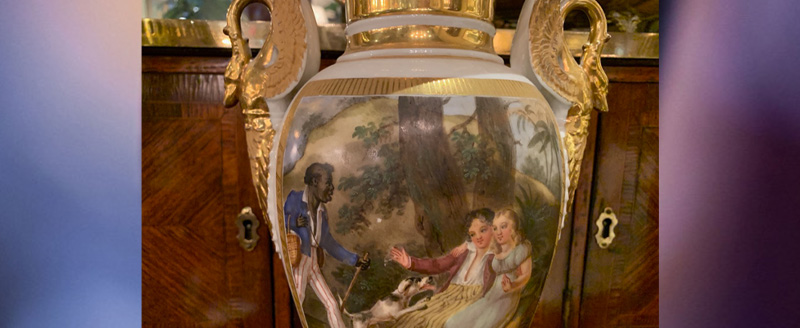
Old Paris Porcelains
Presentation Synopsis: Collectors the world over, and particularly in the great antebellum homes of the Deep South, prize what has become known as "Old Paris" or "Vieux Paris" porcelain. This refers to the incredibly gilt, painted, extremely decorated tableware, vases, urns, clocks, figures, inkwells, perfume bottles, and all manner of accessories created in and around the city of Paris, by over 30 different factories and hundreds of artisans, from the mid-1700s through the end of the Second Empire.
This presentation will begin with a historical account of how Chinese porcelains were made for the export mark. Various patterns, characteristics, and symbolization will be discussed as well as styles varying from neo-classical to rococo revival, Gothic to Renaissance revival. The history of these pieces is as colorful as the items themselves.

The Mystique and Fascination of Jewelry
Presentation Synopsis: Program Synopsis: In the South, rarely will people delve into their family heirlooms without a focus on jewelry. These works of art may be “costumed, hand-made, or of the finest qualities.
Regardless of our race, culture, or religion, jewelry has been used as an integral form of expression for tens of thousands of years.
We use jeweled decorations to denote social status or wealth, to show our individuality or uniqueness, accent our personal attire, and boost our self-esteem.
There are other reasons that consumers use to justify the purchase of jewelry, but in the end, it is all about human ornamentation as a way to emphasize our individuality from the masses.
Our fascination with jewelry stems from a vast array of events. From the symbolic attributes, family heirlooms, the giving of gifts, the love of collecting, and rewarding ourselves with something special.
In this presentation, participants will delve into the history, enrichment and beauty of jewelry through The Mystique and Fascination of Jewelry.
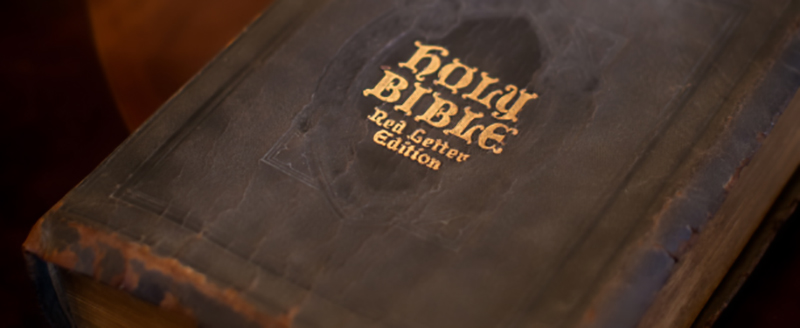
Preserving Our Household History
Presentation Synopsis: Recording our Household History and preparing our loved ones to continue the celebration of family histories and the preservation of your family heirlooms are often overlooked. The presentation will take an extremely personal glimpse into our personal collections and offer strategic steps to entice and educate younger generations on the importance of family collections and making them part of their family lineage. In addition, the importance of documenting and preserving items that represent your families’ heritage, their contributions, their life missions, and their genetic traits that are a part of you, will be discussed as they continue their travels through generations to come.
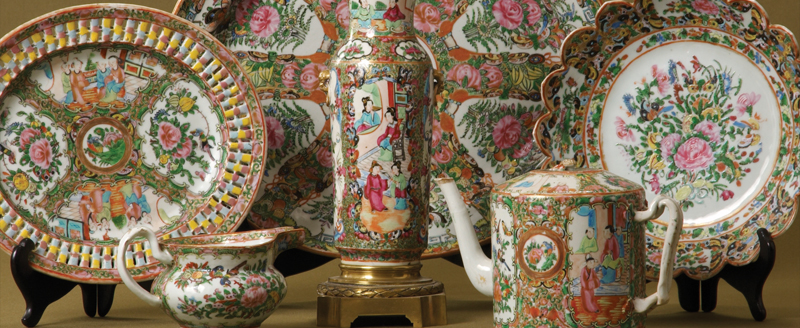
Chinese Export Porcelain: Rose Canton
Program Synopsis: During this presentation, participants will experience grouping of porcelains that have graced Southern Homes for ages. Since the 1820’s, Rose Canton Export Porcelains were made for the English, French, and especially the American markets, and have been part of family collections ever since. This presentation will begin with a historical account of how Chinese porcelains were made for the export mark. Various patterns, characteristics, and symbolization will be discussed.
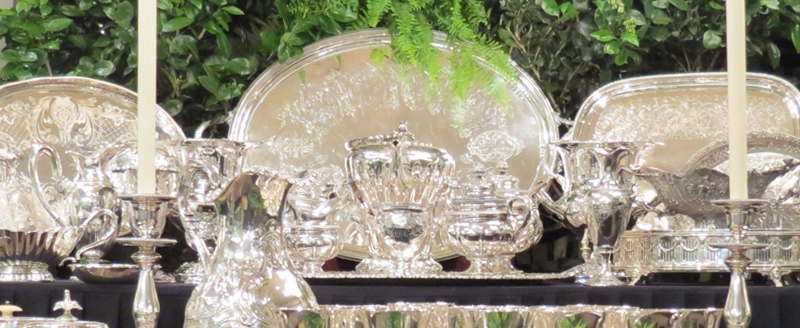
The Joy of Collecting Silver:
Program Synopsis: In the south, the tradition of using silver in the home has been with us since colonial times. Whether utilized to celebrate family dinners, weddings, a ladies luncheon, or larger cocktail gatherings, silver adds a touch of elegance, graciousness, and a spark of refinement. It symbolizes Southern Hospitality at its finest. This presentation will take you on a journey through history and take a look at the work of incredible silver artisans from around the world including America, England, Germany, France, Spain, Japan and Burma. This presentation will inform you, help relive personal memories, and encourage you to go home, visit your silver closet, and enjoy the beauty and charm of silver

Creating New Heirlooms for Children and Young Couples
Program Synopsis: An heirloom is something of special value handed on from one generation to another. This presentation will focus on creating new heirlooms for children and assisting new couples as they begin the process of collecting and establishing heirlooms in their new life. The presentation will feature ideas that parents can use to begin establishing items to be used by children that will build life long memories that can be passes down to their children. It will demonstrate how couples can utilize family heirlooms with modern department store wares, create a basic starter kit of silver and how to use it and how to begin buying antiques and take care of them.
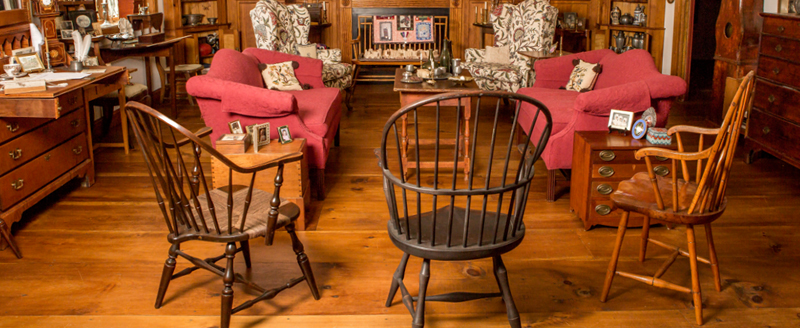
Early American Furniture and Necessities
Program Synopsis: Early American furniture and necessities have been treasured by collectors through the generations. Whether it was an 18 century Tennessee Sugar Chest or a rare piece of Georgia pottery. The thrill of owning pieces of early American history gives one a direct link to our country’s beginnings. This presentation will introduce the history of furniture from the early colonist and its evolution that carried through to the nineteenth century. In addition, early American collections such as 19th Century Stitched Samplers, Miniature Salesman Samples (furniture), Silhouettes, Linens, Cooking Tools, and more will be discussed.
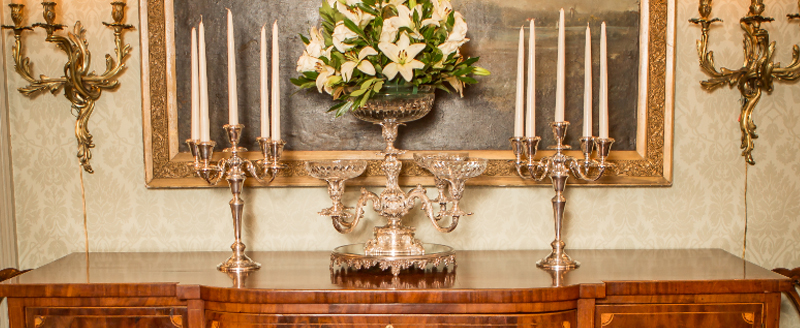
Using Family Heirlooms in Interior Design
Program Synopsis: The desire to own the newest, shiniest pieces for our homes has given way to a need to fill our homes with unique pieces that have a story to tell and that have stood the test of time. This presentation will assist decorators in mastering the art of using family heirlooms and antiques to personalize a home with the taste of the owners. Whether it is an anchor piece or an accessory, mixing the old with the new adds taste and style to the overall feel of a room. In addition, the presentation will present ideas on matching interiors with the style and age of the home, yet still maintaining stylistic accomplishment as an interior designer.
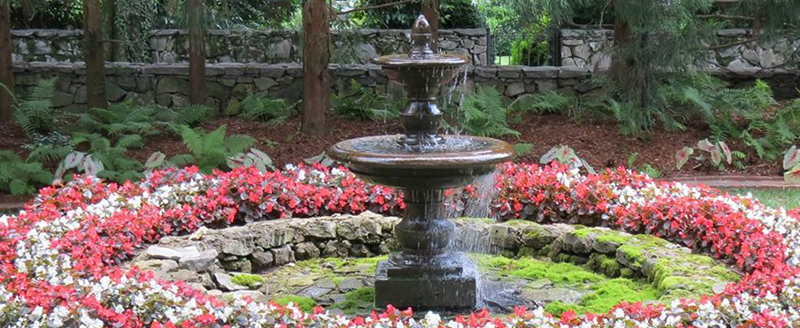
Southern Summer Gardens
Program Synopsis: Southern Gardens are a reflection of personal taste. It may be an extension of the architecture of one’s home, a dream from one’s imagination, a well-executed design from century old gardens of Europe or a plain ole backyard. Gardens are a rare gift, one that people have the occasion to plan, design, and prune and nourish, enjoying an actual living environment. Even in the tiniest back yard, one is involved in a relationship with the earth itself that allows us to convene with nature. This presentation will take you through several gardens of distinction that are each unique, filled with beauty, and full of family memories including a Formal French Garden, an English Garden , an Outdoor Living Garden, a Shade or Green Garden, and even a Secret Garden. Through gardening, we feel whole as we make our personal work of art upon our land.
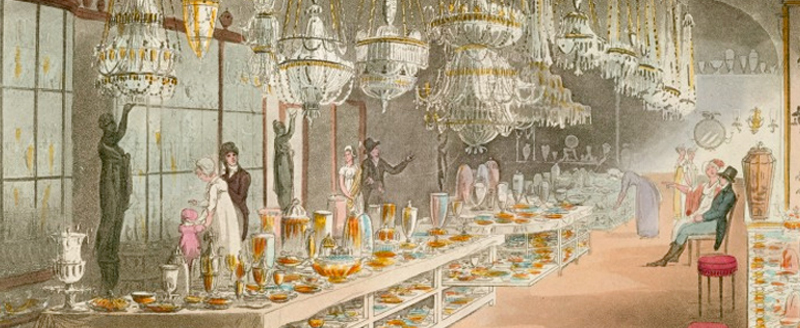
The Life and Works of Thomas Chippendale
Program Synopsis: Chippendale is the most well-known name associated with antique furniture. Thomas Chippendale, a cabinetmaker, was England’s foremost furniture designer during the 18th Century and the first person whose name is associated with a style of furniture that was not nobility. Chippendale furniture is known by its exquisite and extensive carvings and lines that reflected popular English tastes of the period incorporating English Rococo, Gothic, and Chinese motifs. This presentation introduces the incredible, artistic contribution made to the antique world by Thomas Chippendale. Thomas Chippendale, an English cabinetmaker, was one of the most distinguished of all furniture designers. His book of 181 design plates, The Gentleman and the Cabinetmakers Director, was the first comprehensive design book for furniture ever to appear, and it remains probably the most important. It allowed the creative mind set and style of Thomas Chippendale to quickly spread across the world, making this style entrenched in fine furniture through the centuries and one that we continue to enjoy today. It is my hope that this presentation will further your interest in fine antiques and the exquisite details and artistic talent that contribute to our heirloom legacy.

Bringing the Family Back to the Table
Program Synopsis: Most American families are starved for time to spend together, and dinner may be the only time of the day when we can reconnect, leaving behind our individual pursuits of work, playing with our electronic devices, emailing and doing homework. Dinner is a time to relax, recharge, laugh, tell stories and catch up on the day’s ups and downs, while developing a sense of who we are as a family. Dinner is the most reliable way for families to connect and find out what’s going on with each other. This daily mealtime connection is like an insurance policy for children travelling down the road of childhood and adolescence and all its possible dangers. This presentation delves into the powerful influence Family Dinners have on our family. “Bring the Family Back to the Table” touches on ideals that are supported by massive amounts of research that repeatedly shows the benefits of a family consistently dining together. It also includes research on the need, benefits, and guidelines for assisting young families with hectic schedules.
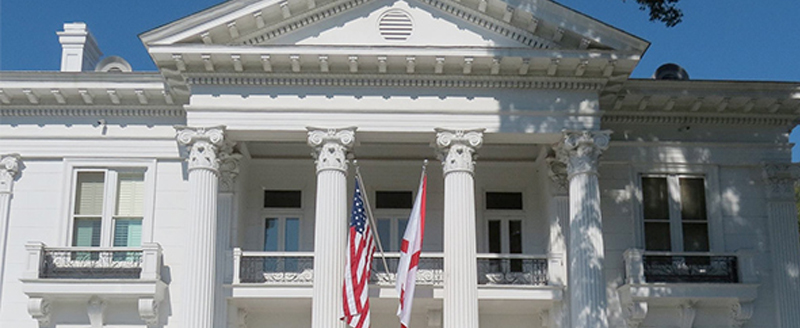
The Alabama’s Governor’s Mansion
Program Synopsis: This presentation takes you inside one of Alabama most iconic homes, The Alabama’s Governor’s Mansion We will take a look at the official residence of the Alabama First Family from a historical perspective focusing on its rich history as well as the beautiful public rooms and their furnishings contained in this house-museum known as “The People’s House.” The Alabama Governor’s Mansion was originally built as a private home in 1907 for Brigadier General Robert F. Ligon Jr. The house was built by T. Weatherly Carter of the Montgomery architectural firm of Benjamin Smith and T. Weatherly Carter. It became the second Alabama Governor’s Mansion in 1951. The presentation guides you through the public rooms of the historic house museum as well as the contents of the permanent collection.
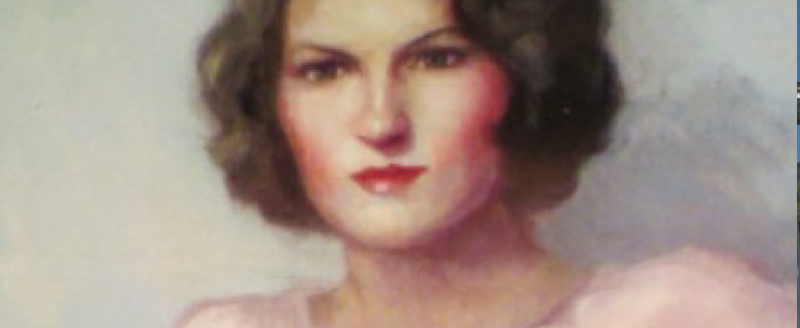
Zelda Sayre Fitzgerald, Our Montgomery Southern Belle
Program Synopsis: By the time a person has achieved years adequate for choosing a direction, the die is cast and the moment has long since passed which determined the future.” This quote by Zelda Sayre Fitzgerald perfectly illustrates her lifelong struggle to create her own artistic identity. Born in 1900 in Montgomery, Alabama, she entered a world that was just starting to consider the possibility that women might have the right to be independent citizens capable of making their own decisions. Zelda had a zest for life that no one of her day could touch. Her artistic flare forever changed the opinion of women and their place in the world. She was a brilliant and vivid writer whose private work was utilized by her husband, making him more popular than he deserved. This presentation applauds the spirit of America’s first flapper, our Montgomery Southern Belle, who in 1992 became a member of Alabama Women’s Hall of Fame. Zelda Sayre Fitzgerald, may your spirit live on in the creative minds of us all.
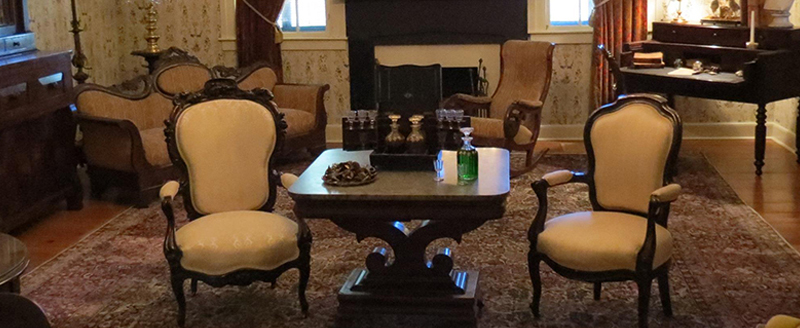
The White House of the Confederacy
Program Synopsis: The First White House of the Confederacy was the executive residence of President Jefferson Davis and family while the capital of the Confederate States of America was in Montgomery, Alabama. Completely furnished with original period pieces from the 1850s and 1860s, the 1835 Italianate-style house is a beautiful old landmark in the downtown area of historic Montgomery, Alabama. It has been listed on the National Register of Historic Places and the Alabama Register of Landmarks and Heritage. Bruce Catton wrote: “Davis finally becomes a possession of the whole country and not just a section.” The place of Jefferson Davis in American history as the first and only President of the Confederate States of America is unique. This presentation explores in the incredible collection of personal family artifacts that have been amassed for more than 150 years.
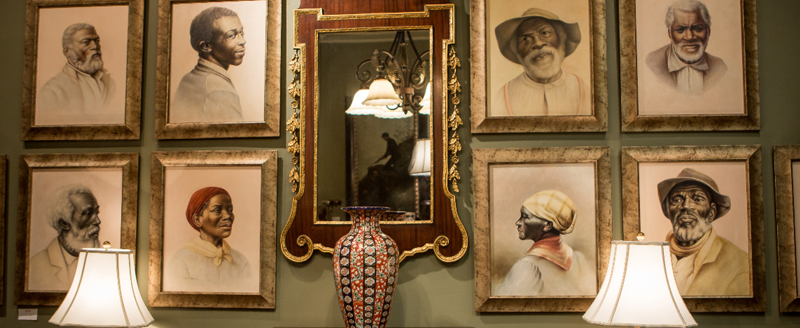
The Life and Works of Maria Howard Weeden and the Weeden House Museum
Program Synopsis: This presentation presents Alabama’s rich historical heritage as seen through the windows of one home, the oldest house museum in Alabama, The Weeden house, in Huntsville. The Weeden House is a superb example of Federal architecture. This style of American architecture was generally popular during the period 1776 – 1835. This style was greatly influenced by the light and elegant designs created by English architect Robert Adams. Maria Howard Weeden (1846-1905), known as Howard, was an Alabama artist who gained international recognition for her watercolor portraits of formerly enslaved freed people. Alabama’s poet laureate in 1904, Weeden also wrote poetry in the regional black dialect and published four books of poetry and accompanying illustrations. Weeden’s preferred medium in painting was watercolor. A combination of her extreme nearsightedness and using brushes of only three hairs for painting allowed her to capture delicate details in her portraits. Howard Weeden was the first American Artist to portray African Americans with Spirit and Soul.
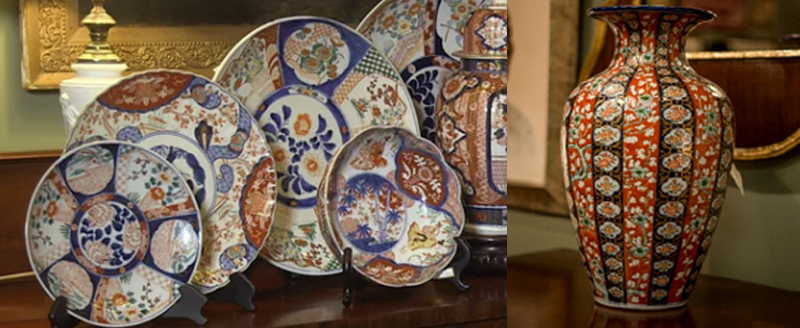
Japanese Imari Porcelain
Program Synopsis: Imari porcelain was made in Japan and China beginning in the seventeenth century. In the eighteenth century and later, it was copied by porcelain factories in Germany, France, England, and the United States. It was especially popular in the nineteenth century and is still being made. Imari is characteristically decorated with stylized bamboo, floral, and geometric designs in orange, red, green, and blue. Japanese Imari had less details, darker colors, and less gold by the middle of the nineteenth century. The name comes from the Japanese port of Imari, which exported the ware made nearby in a factory at Arita, Japan. This presentation delves into the rich mineral deposits in Arita and the process in which the porcelain is made, in incredible artistry that Imari entails, and a beautiful collection of finished examples if Imari Porcelain.